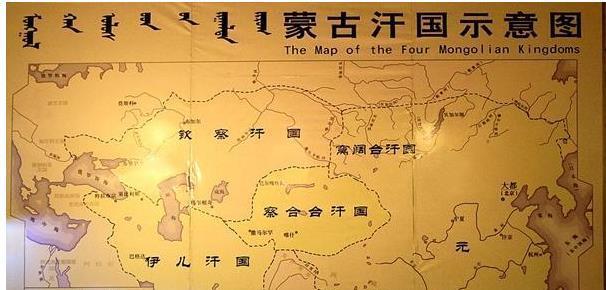The most successful from ancient times to the present is not the Mongol Empire, nor the Han and Tang Empires, but this country
The Mongol Empire was known to Europeans as the Yellow Peril. It still makes them shudder.
Indeed, the great achievements of the Mongol Empire are truly astonishing.
In just a few short decades, the Mongol Empire rose out of thin air from the steppes and then set out on all sides to establish a large empire that spanned Eurasia. Its territory stretches from the Sea of Japan in the east, the Mediterranean Sea in the west, Siberia in the north, and the Persian Gulf in the south, with a land area of more than 30 million square kilometers.
Within the Mongol Empire, the Chincha (Golden Horde) Khanate, chagatai khanate, Wokoutai khanate, Ilkhanate, and the vast Yuan dynasty ruled by Kublai Khan, their territory was far more extensive than any other empire in human history.

Within the Mongol Empire, there were Mongols, Chinese, Arabs, and Europeans, the first empire to rule many different civilizations into one country. Moreover, the Mongol Empire did promote exchanges between different civilizations, which is its contribution to the human world.
However, the Mongol Empire did not actually exist for long, due to the lack of a stable Khan succession system within the Mongols, each change of Khanate had to cause disputes, and the independence of several major khanates was getting stronger and stronger, in fact, the later so-called Mongol Empire had split, and the Emperor of the Yuan Dynasty, although he was the nominal Great Khan of the Mongol Empire, could not effectively rule the entire empire.
In fact, the life span of the Yuan Dynasty was not very long. In 1368, most of the Yuan capitals were captured by the Ming general Xu Da, declaring the demise of the Yuan. If you count the official removal of the name of the country by the Yuan Dynasty, its demise is 1399. From 1206, when Genghis Khan unified Mongolia, the Mongol Empire existed for less than 200 years. This also includes a large part of the process of conquest and the subsequent process of resistance and escape. In fact, the Yuan Dynasty flourished for less than 100 years.
100 years is actually a short time in the history of human civilization. Therefore, although the Mongol Empire set a record, it also quickly failed. Later, the major khanates were assimilated by the locals, the rulers of the Yuan Dynasty were expelled from the Central Plains by the Han Chinese, and a huge empire fell apart. The Mongols were re-divided into tribes and conquered by the Manchus during the Qing Dynasty. During the Republic of China, Outer Mongolia became independent under the auspices of the Soviet Union. Today, Mongolia is no more than a few million people, and its influence in the world is negligible.
One country, on the other hand, was much more successful than the Mongol Empire. This is Russia, from Tsarist Russia to the Soviet Union to Russia, although its territory is constantly changing, but the main body of Russia has always existed and still plays an important role in the world.
Let's look at the original state of Russia, its original prototype was Kievan Rus', which is now the capital of Ukraine, Kiev.
It should be said that the Mongols helped Russia a lot. After the Mongols conquered the territory of Russia, they crowned a Muscovite principality. Since the Mongol Empire unified this territory, the subsequent expansion of the Muscovite Principality was very easy.
Since the entire territory of Russia is almost an endless grassland and there are few mountains, this makes it easy to expand.
After the overthrow of Mongol rule, the Muscovite principality began to expand on all sides.
In the West, the Russians fought against Poland and Turkey, eventually reaching the Baltic coast. In the east, occupying a vast area of Siberia and bordering the Qing Dynasty, it first used the Treaty of Nebuchu to gain legitimacy for its rule in the Far East. Later, when the Western powers encroached on China, they fell into the rock and seized millions of square kilometers of Land and Earth in China. The vast sakhalin island and lake Baikal region officially became the territory of Russia. Moreover, Russia once occupied more than 1.7 million square kilometers of Alaska in the Americas before it was sold to the United States. That is, it occupies the territory of three continents.
According to the Japanese scholar Chiharu Watanabe, from the beginning of the 16th century to the beginning of the 20th century, Russia expanded at an average rate of 130 square kilometers per day. This is a very staggering figure, and, crucially, the places it occupies are officially included in the map and the immigrants are in place. And it still reigns today.
This was much more successful than the Mongol Empire.
From Tsarist Russia to the Soviet Union to present-day Russia, Russia's main territory has not changed significantly. The Soviet Union has an area of more than 22 million square kilometers, and russia still has an area of more than 17 million square kilometers, still occupying the first place in the world.